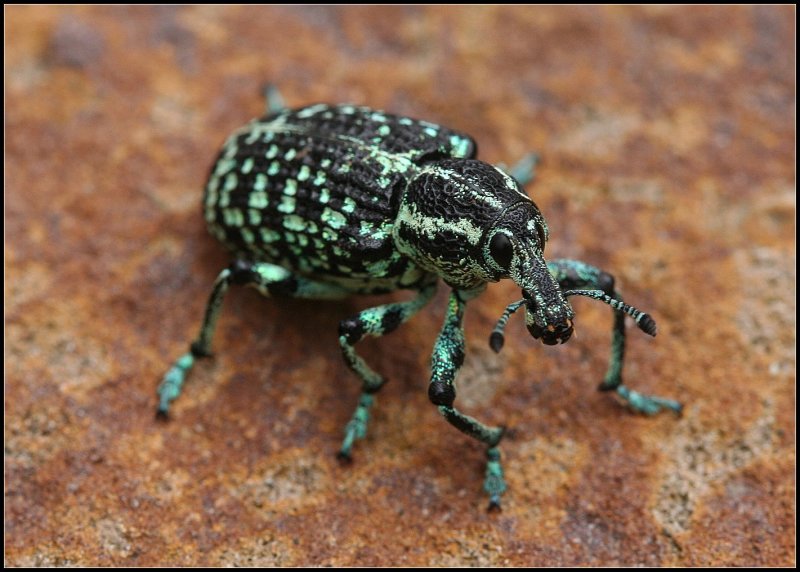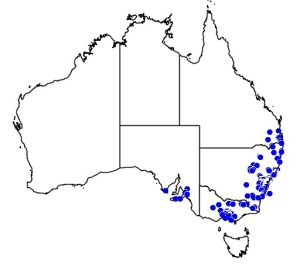Colours
Distinguishing features
The elytra are black, with irregular spots of bright metallic green. The underside of the body is shaded in matt green, and a white or green line runs the length of the animal's sides. The head, thorax and legs are black with occasional metallic green markings. The colouration varies across the year, with animals emerging later in the season having a bluer colour.
The snout is about as long as the bell-shaped pronotum, and strongly curved. The geniculate antennae arise from halfway along the snout, and end in a small club. The compound eyes protrude slightly. The elytra display a row of furrows with slight depressions, and the animal's ventral side is also covered with scales. The powerful legs have a thick voering of hair on the tarsi, which have no claws.
The larvae are 40–50 mm long; they are white, round and wrinkled, with a few hairs on their sides, and a red–brown head with black mandibles.
To date, the pupa has not been described. (Wikipedia)
Size
- Up to 2.5 cm (Length of specimen)
Wingspan
- Wingspan data is not yet available.
Synonyms
Interesting facts
- Apparently, this was the first Australian invertebrate to be scientifically described. (according to Dave Midgley)
Distribution
Distribution and habitat preferences
It occurs in the eastern and southern states of Australia, with a range stretching from the coastal region of Queensland to Victoria and eastern parts of South Australia.
It is most common in eastern parts of New South Wales, particularly the surroundings of Sydney, and out to the foothills of the Great Dividing Range. (Wikipedia)
Diet
It is a specialist, only known from 28 species of Acacia. (Wikipedia)



